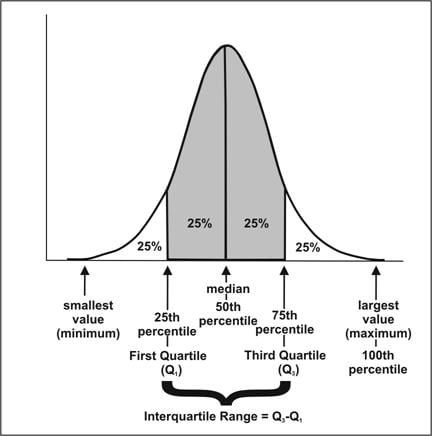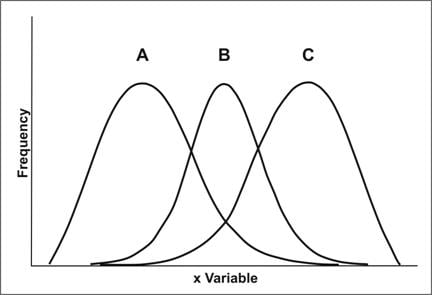Types of variables: Qualitative or categorical variables are included in nominal and ordinal scales. Quantitative or continuous variables are included in interval or ratio scales.
Nominal scale: Values are categories without any numerical ranking, such as county of residence, vaccinated or unvaccinated, male or female etc. Yes/No scale is also nominal.
Ordinal scale: Values that can be ranked but are not necessarily evenly spaced, such as stages of cancer. Values are arranged in groups or classes in an ascending or descending order e.g. Stage I breast cancer is less severe than Stage IV.
Interval scale: Values can be measured on a scale of equally spaced units, but without a true zero point, such as date of birth.
Ratio scale: It includes interval variables with a true zero point, such as height in centimeters or duration of illness.
Categorical variables are usually further summarized as ratios, proportions, and rates. Continuous variables are often further summarized with measures of central location and measures of spread.
Frequency distribution:
Normal or symmetric or Gaussian distribution: In such a frequency distribution, the data seem to cluster around a central value. It forms the classic bell-shaped curve when plotted on a graph. The clustering at a particular value is known as the central location or central tendency of a frequency distribution. The mean, median and mode are the same in a normal distribution.

Bell-shaped curve. The central tendency, the middle is the median, 50th percentile. 25% to the left is the 25th percentile, the first quartile (Q1). 25% to the right of the median is the 75th percentile, the third quartile (Q3). The interquartile range goes from Q1 to Q3 and makes up 50% of the area under the curve. The largest value is the 100th percentile.

Three superimposed bell curves. The shapes of all three are different. A is shifted to the left. B is symmetrical. C is shifted to the right.
Problem 1: Calculate the mode from the following data set
1, 1, 2, 2, 2, 3, 3, 3, 3, 3,
Answer is 3 (most common value).
Problem 2: Calculate the median from the following data set
4, 23, 28, 31, 32
Answer is 28 (as it is the middle value).
Problem 3: Calculate the median from the following data set
4, 23, 28, 30, 31, 32
As the data set has an even number of values, take an average of the middle two values
In the above example, it will be 28+30/2 = 58/2 = 29.
Problem 4: Calculate the arithmetic mean from the following data set
1, 1, 2, 2, 2, 3, 3
To calculate add all the values and divide by the number of values.
In the above example it will be 1+1+2+2+2+3+3 = 14 /7 = 2
In right skewed distributions, Mode < Median < Mean
In left skewed distributions, Mean < Median < Mode
Sign up for free to take 1 quiz question on this topic